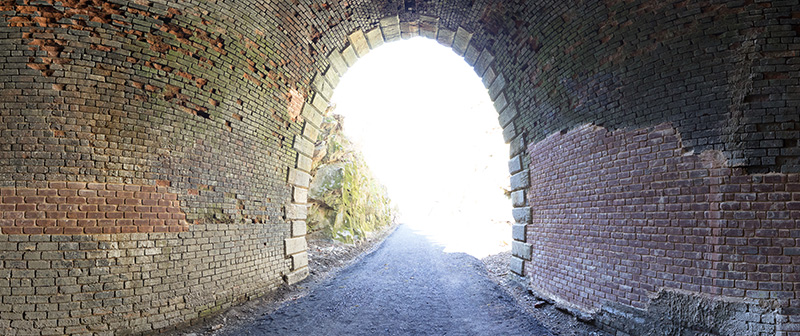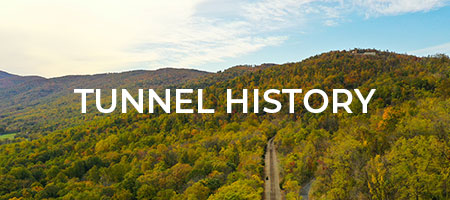Directions | FAQ | Rules | History
French immigrant Claudius Crozet (1789–1864) designed the Blue Ridge Tunnel and was its chief engineer. He was a graduate of the École Polytechnique in Paris and served as an artillery officer during Napoleon’s invasion of Russia. Among his many accomplishments, he was a professor of engineering at the U. S. Military Academy in West Point, N. Y. He was also a founder of the Virginia Military Institute and first president of the Board of Visitors.
Chief Engineer Crozet began, with the help of assistant engineers, by surveying a route between Mechum’s River in Albemarle County on the east side of Rockfish Gap to Waynesboro on the west side. His resulting plan included three tunnels, man-made embankments across deep hollows with numerous culverts in Albemarle County, and the almost one-mile-long Blue Ridge Tunnel between Nelson and Augusta Counties.
Crozet predicted that the Blue Ridge Tunnel would be finished by 1853, but the unexpected hardness of the rock, especially greenstone on the east side, turned out to be an almost unbeatable opponent. Indeed, he referred to hard rock 90 times in letters he wrote to the Board of Public Works between 1849 and 1858.4 Nonetheless, Irish immigrant laborers perforated the tunnel on December 29, 1856, meeting within inches of his carefully engineered alignment.
Sixteen long months passed before laborers could finish blasting, laying tracks, and lining sections of the Blue Ridge Tunnel with bricks. Meanwhile, local citizens—most from Augusta County—petitioned the Board of Public Works three times in 1857, insisting that the Virginia Central Railroad finish the passage. Disgusted by criticism of his management, Crozet found employment elsewhere in December 1857. He formally resigned in January 1858.
The Blue Ridge Tunnel opened to traffic three months later on April 13, 1858. At the time, it was the longest railroad tunnel in North America. Though Claudius Crozet was not among the dignitaries who rode the first train through the passage, his professional expertise and visionary leadership were essential to the Blue Ridge Railroad and other lines built across Virginia in the 1840s and 1850s.
Visit the Blue Ridge Tunnel Foundation website for additional information on the history of the tunnel.



